19 Wild Animals in Palestine [Wildlife in Palestine]
Want to know more about wildlife in Palestine?
Discover 19 wild animals in Palestine in this post, as well as interesting facts about them. 🇵🇸
Learn All About Palestinian Animals
Ready to learn all about Palestinian animals?
I’ve always been fascinated by animals, and by how they can be so different from one country to another. In this guide, we’ll focus on the many animals Palestine has on the land, in the sky, and underwater.
I’ve split the guide into 4 categories:
- Native animals from Palestine
- Endangered animals of Palestine
- What is the national animal of Palestine?
- How many animals native to Palestine?
Let’s dive in right away with our first category!
Native Animals from Palestine
Palestine is an Asian country located in the western part of the continent, sharing lands with Israel. It is not a fully recognized state, which led to a never-ending civil war, controls the Gaza Strip which is separated from the rest of the country and is under permanent blockade from Egypt and Israel and claims its independence. Egypt, Israel, and Jordan border it, and although its administrative center is Ramallah and its largest city is Gaza City, it claims its capital is Jerusalem, which counts more than 936,000 inhabitants (but more than 1,253,000 if you include the metropolitan area), although this is not recognized on an international level, and Israel controls the city.
An interesting part of the country that I wanted to tackle is its wildlife. In light of that, I have listed the best of it, and I hope you will love learning what animals live in Palestine.
Here’s the Palestine animals list.
1. Striped hyena
- Name: Striped hyena
- Scientific name:
- Conservation status:
The striped hyena is one of the most iconic animals from the Middle East in general. It can also be found in the Indian subcontinent, northern and eastern Africa, Central Asia, and the Caucasus.
In Palestine, it has historically been feared but also depicted as a symbol of fertility and love, which is why a lot of specimens have been killed and their body parts have been used in traditional medicine.
2. Honey badger
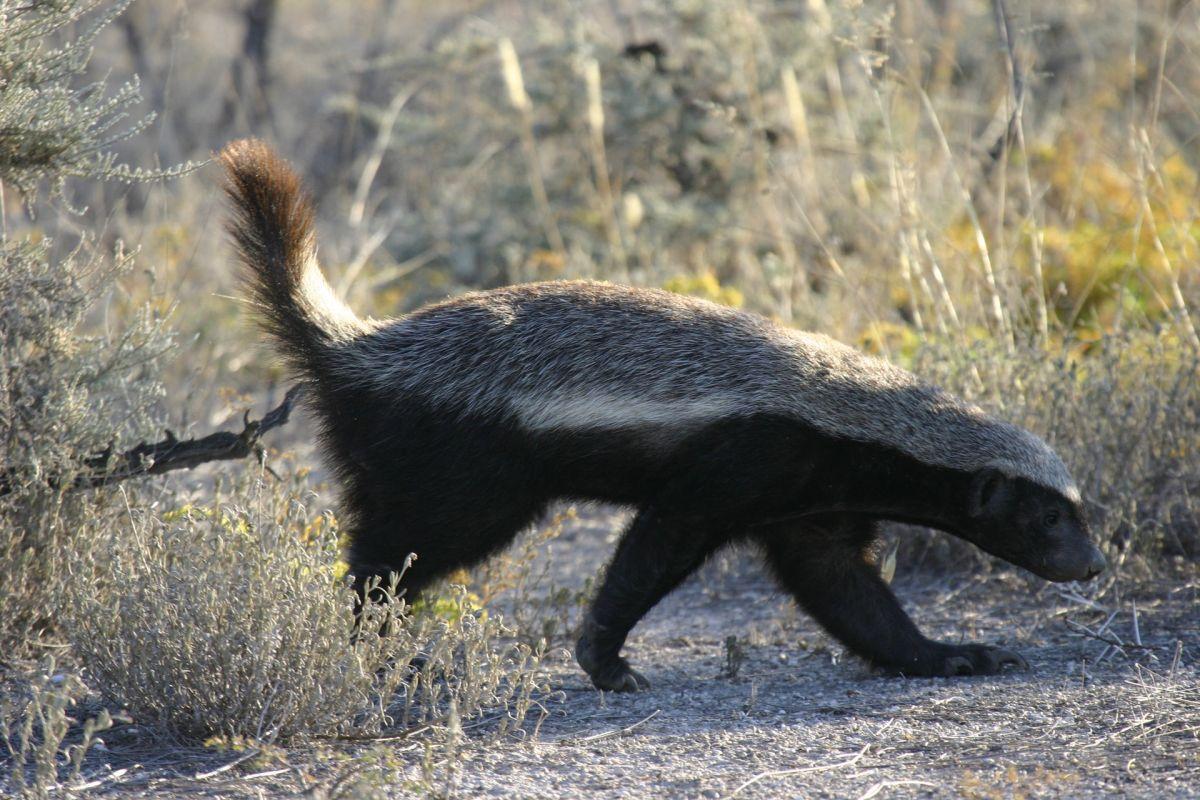
- Name: Honey badger
- Scientific name: Mellivora capensis
- Conservation status:
The honey badger, also known as the ratel, is a species of mammal with a very wide distribution, ranging from sub-Saharan Africa to the Indian subcontinent, as well as the Arabian Peninsula and the Middle East. Although classified as a carnivore, it is particularly opportunistic and feeds on a wide variety of insects, honey, and animals.
Thanks to its very thick skin and ferocious behavior, the honey badger don’t have many natural predators.
3. Caracal
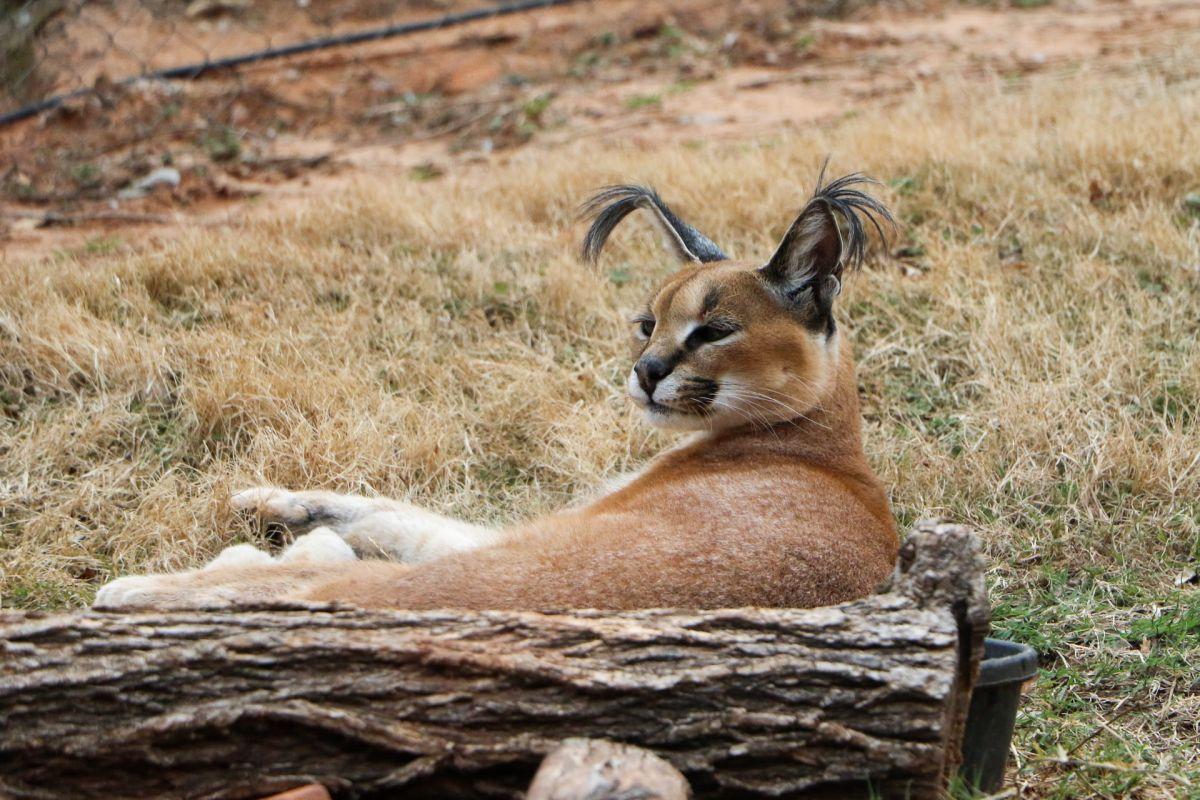
- Name: Caracal
- Scientific name: Caracal caracal
- Conservation status:
The caracal is a medium-sized species of wild cat native to Middle East Africa, the Indian subcontinent, and Central Asia. It has long, tufted ears and an athletic body with slender legs, and is an adept leaper, climber, and swimmer. It feeds on small birds, mammals, and rodents
Despite being possibly very dangerous, the caracal has been tamed in countries such as Persia, Egypt, and India, and used for coursing!
4. Dorcas gazelle
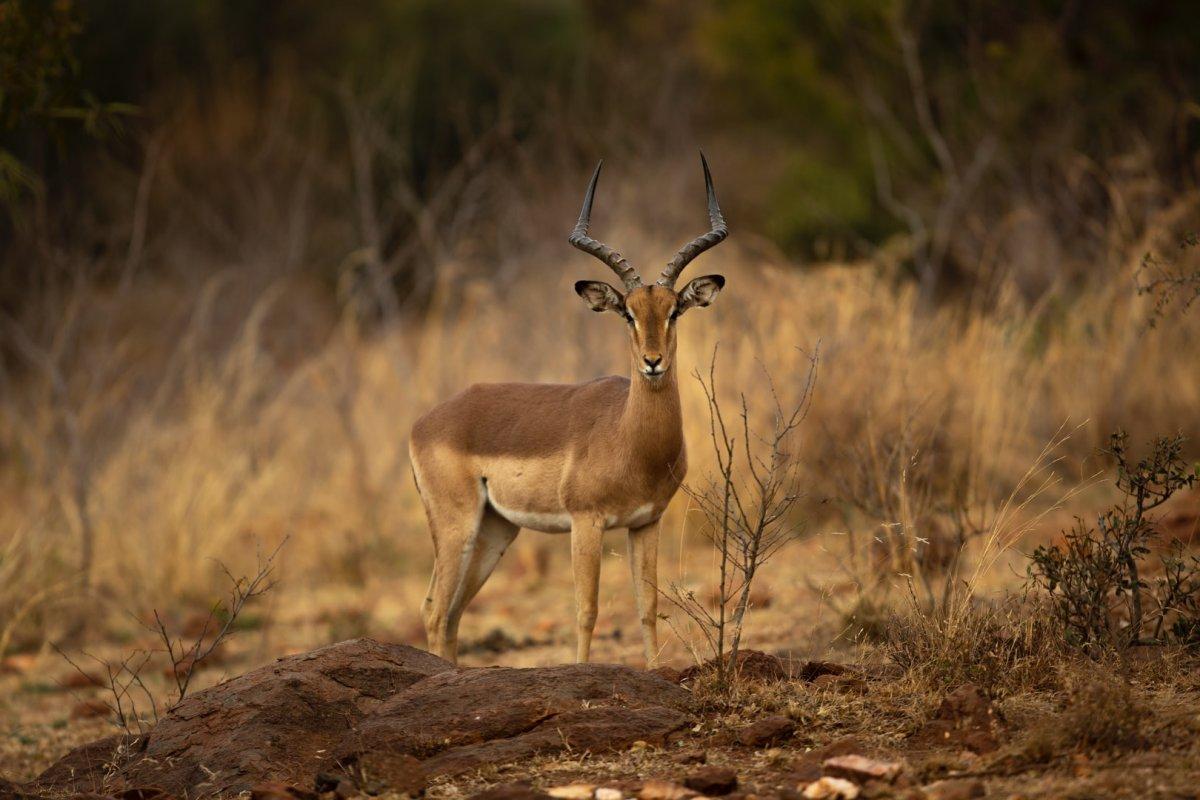
- Name: Dorcas gazelle
- Scientific name: Gazella dorcas
- Conservation status:
The Dorcas gazelle, also known as the ariel gazelle, is one of several species of gazelle that can be found in Palestine. It lives in the steppe, grasslands, semi-deserts, and mountain deserts of Africa and Arabia, and there are about 35,000 to 40,000 individuals left in the wild.
Despite reasonably large numbers, the Dorcas gazelle is considered vulnerable to extinction because of poaching for its horns and pelts, which are used for medicinal and decorative purposes.
5. Nubian ibex
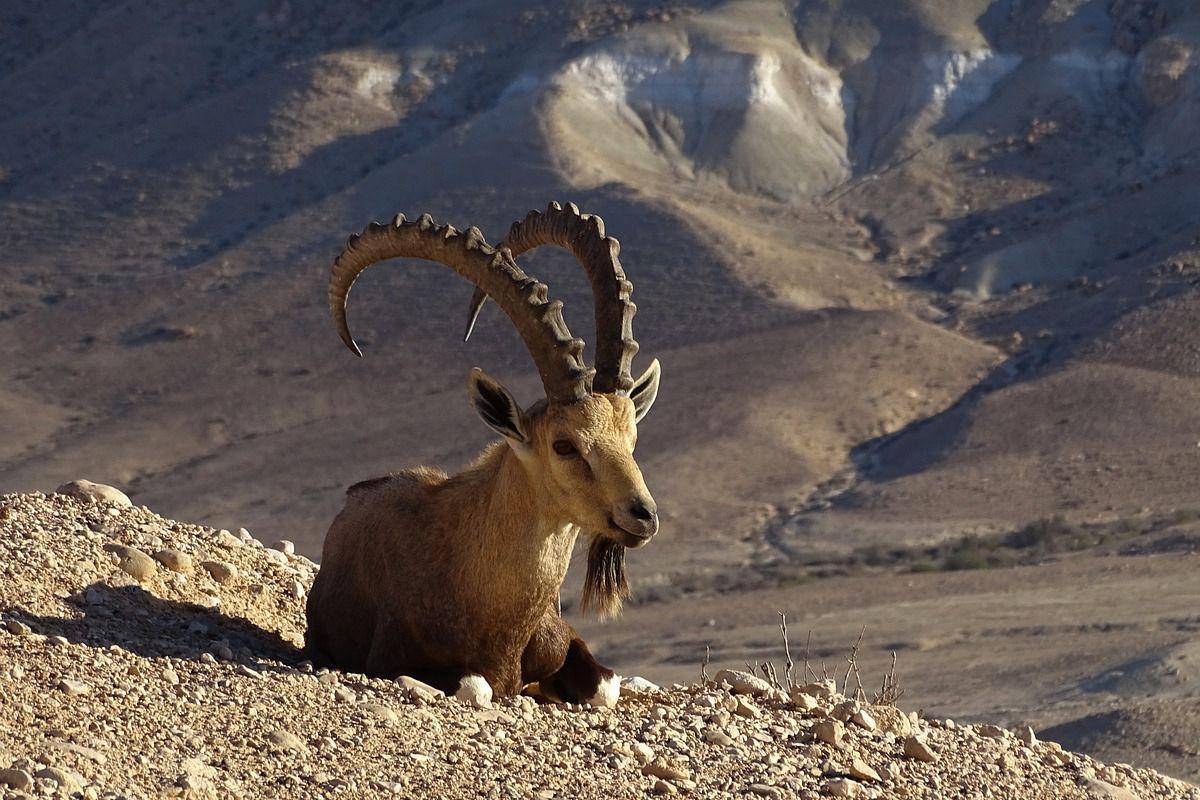
- Name: Nubian ibex
- Scientific name: Capra nubiana
- Conservation status:
The Nubian ibex is a species of goat native to the Middle East, as well as northern and northeastern Africa. There are 1,200 ibex in the wild, and they used to be considered a subspecies of the Alpine ibex, but are now a species on their own.
This ibex lives in dry, arid, and mountainous terrain, and feeds on leaves and grasses. Its main predators are leopards, foxes, eagles, vultures, and wolves, and it either lives a solitary life or gathers in small bands of up to 8 individuals.
6. Mediterranean monk seal

- Name: Mediterranean monk seal
- Scientific name: Monachus monachus
- Conservation status:
The Mediterranean monk seal is a species of seal native to the Mediterranean Basin. It is known to be the rarest pinniped in the world, and it survives in several isolated populations across the sea and the Atlantic Ocean.
This seal is active by day and feeds on fish and mollusks. Its main threats are fishing accidents, persecution, and pollution. In Palestine, it can be found around the coast of the Gaza Strip.
7. Indian wolf
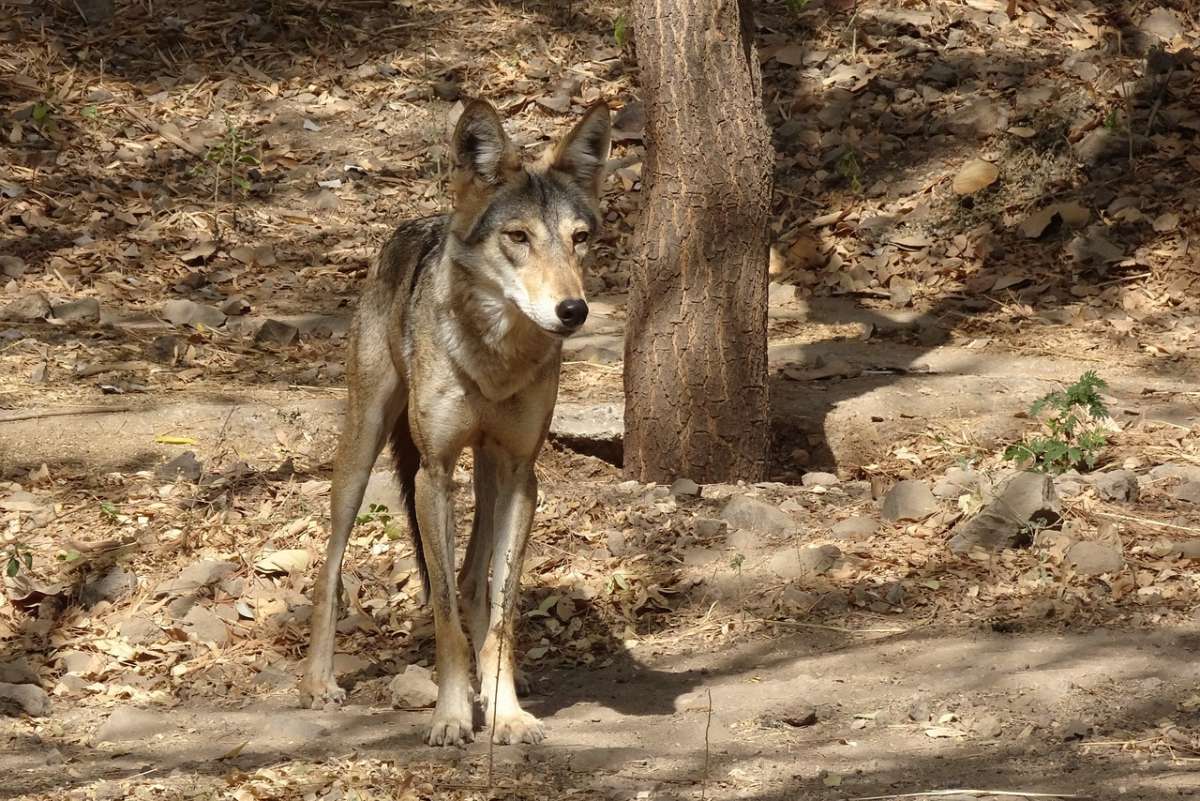
- Name: Indian wolf
- Scientific name: Canis lupus pallipes
- Conservation status:
The Indian wolf is one of the most endangered subspecies of the gray wolf in the world. Despite this, it still has a pretty wide range, going from Turkey to the Indian subcontinent. It is known for being cunning and is often killed as a form of persecution for attacking livestock.
This wolf is unique because of its speed and endurance, and it is an adept hunter that attacks its prey during the night, from dusk to dawn.
8. Egyptian mongoose
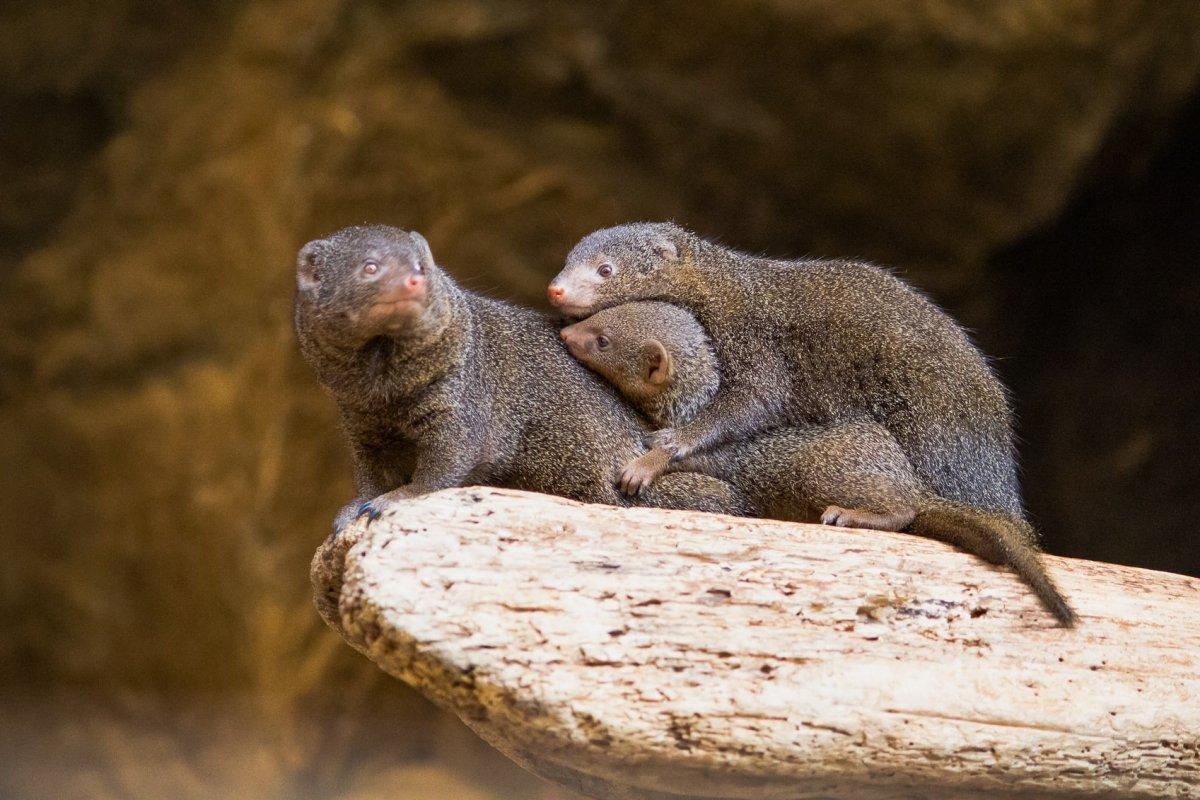
- Name: Egyptian mongoose
- Scientific name: Herpestes ichneumon
- Conservation status:
The Egyptian mongoose is a species of mongoose native to Egypt, but also to a very large portion of sub-Saharan Africa and the Middle East. It is also present on the southwestern Iberian Peninsula, but whether it is native or was introduced there is not quite certain.
In Palestine, the Egyptian mongoose is known to attack and feed on venomous snakes, such as the Palestine viper, the black-necked spitting cobra, and the black desert cobra, as well as being resistant to their venom.
9. Palestine viper
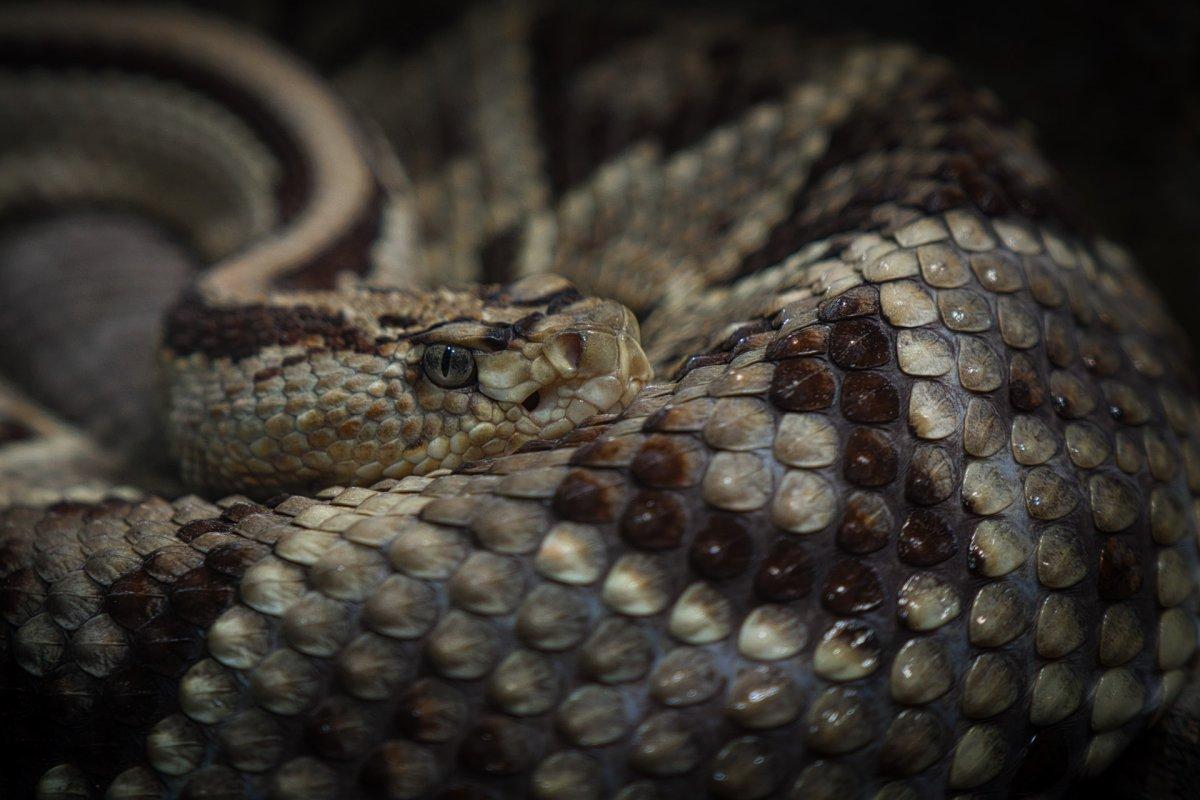
- Name: Palestine viper
- Scientific name: Daboia palaestinae
- Conservation status:
Speaking of which, the Palestine viper is a species of venomous snake endemic to the region of the Levant, which includes Palestine. It is a major cause of snakebite within its range, and its main populations are located around the Mediterranean coastal plains.
This viper is Israel’s national snake, and although its numbers are not known, it has a pretty wide range, can survive in lots of habitats, and is unlikely to decline fast, which is why it is listed as least concern.
10. Rüppell’s fox
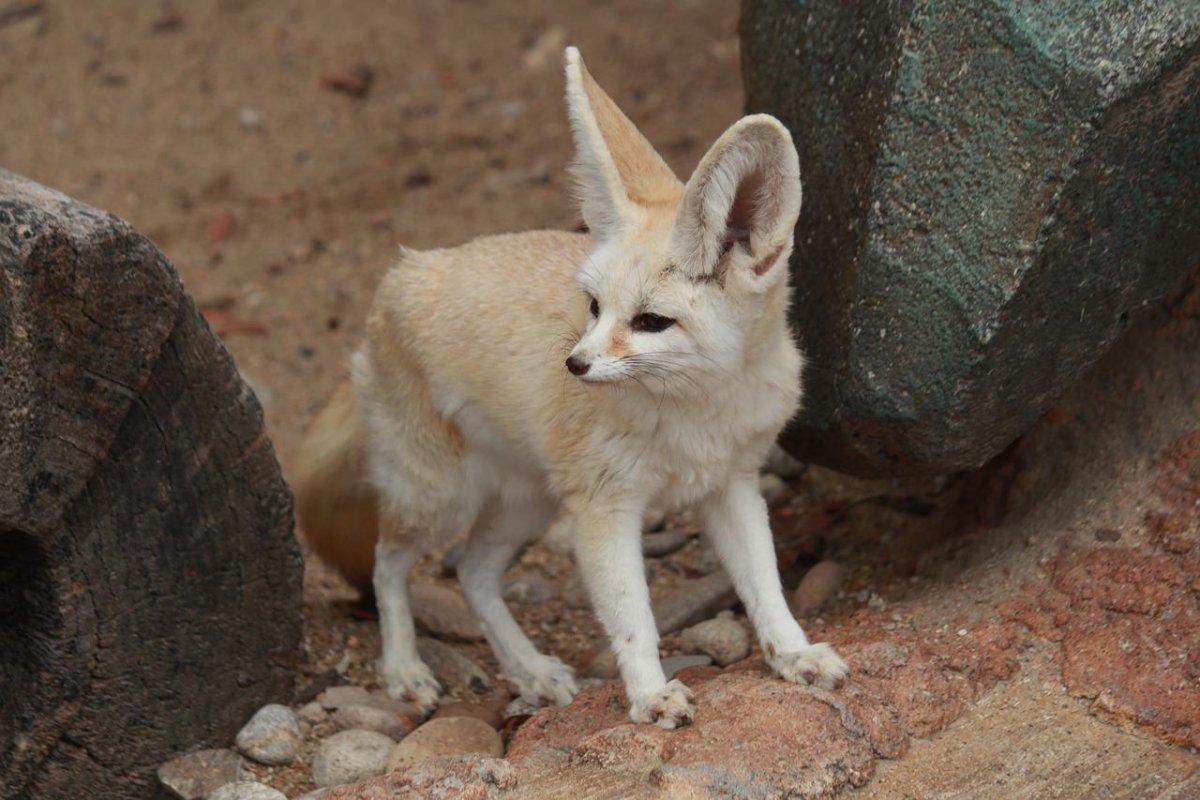
- Name: Rüppell’s fox
- Scientific name: Vulpes rueppellii
- Conservation status:
Rüppell’s fox, also known as Rüppell’s sand fox, is a species of fox native to the deserts of North Africa, southwestern Asia, the Middle East, and the Arabian Peninsula. It is an omnivore with a diet largely varying depending on local availability; however, it is known to feed on insects, lizards, small mammals, and birds.
This fox is crepuscular or nocturnal, and it spends the day resting in underground dens.
11. Common bottlenose dolphin

- Name: Common bottlenose dolphin
- Scientific name: Tursiops truncatus
- Conservation status:
The common bottlenose dolphin, also known as the Atlantic bottlenose dolphin, is a species of marine mammal native to temperate and warm seas and oceans around the world. It can be found in the Mediterranean Sea, which is why it is sometimes seen around the coastline of Palestine.
This dolphin is particularly well-known around the world, being very present in the media, as well as in marine parks.
12. Egyptian fruit bat
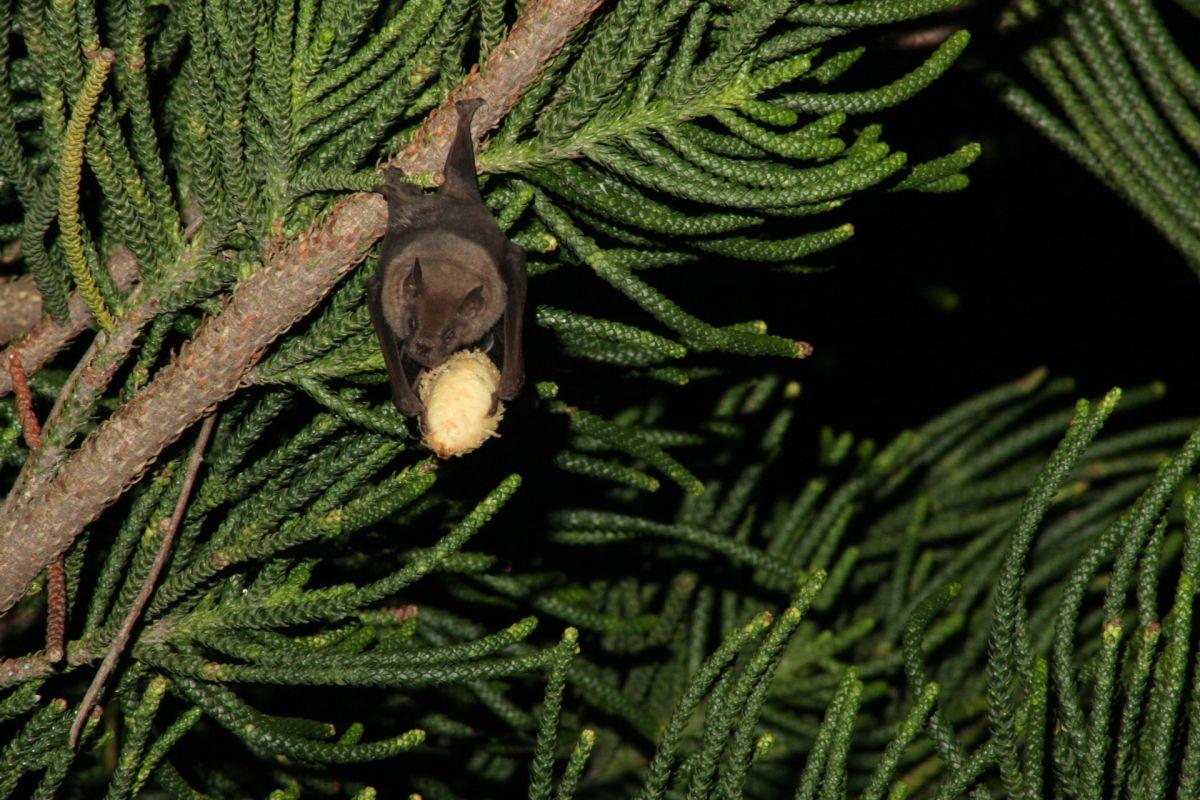
- Name: Egyptian fruit bat
- Scientific name: Rousettus aegyptiacus
- Conservation status:
The Egyptian fruit bat, also known as the Egyptian rousette, is a species of megabat native to Africa, the Mediterranean, the Indian subcontinent, and the Middle East. It is highly social and lives in colonies of several thousands of bats.
As its name implies, this flying mammal is a frugivore that consumes a wide variety of fruit depending on what’s available. Because of its tendency to eat commercially-grown fruits, it is considered a pest by many farmers. However, it is an important seed disperser and pollinator for many species of plants and trees within its range.
13. Etruscan shrew
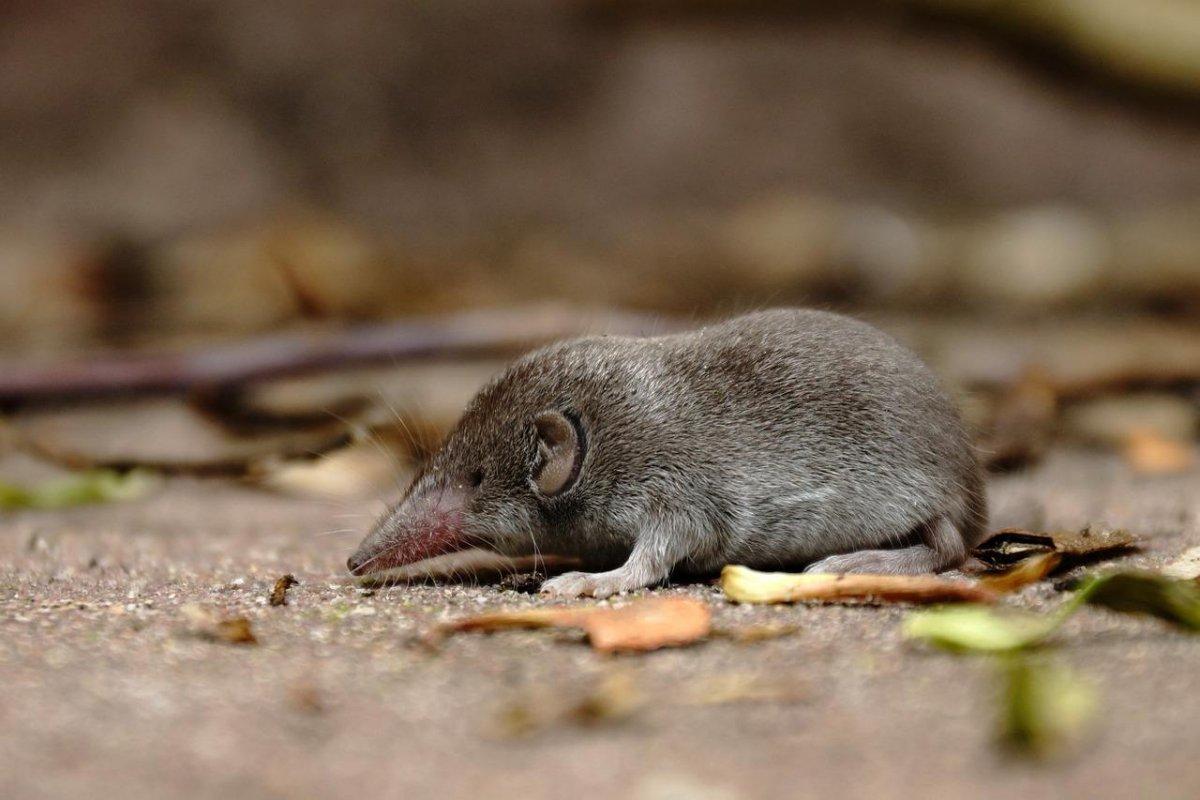
- Name: Etruscan shrew
- Scientific name: Suncus etruscus
- Conservation status:
The Etruscan shrew, also known as the white-toothed pygmy shrew or the Etruscan pygmy shrew, is the smallest mammal by mass in the world, weighing only about 1.8 g / 0.063 oz on average! It can be found in scattered populations around the Mediterranean Basin, but also in parts of Africa, the Arabian Peninsula, and southwestern, southern, and southeastern Asia.
This shrew is sometimes endangered depending on the country, mainly because of habitat loss and agricultural expansion.
14. Desert hedgehog
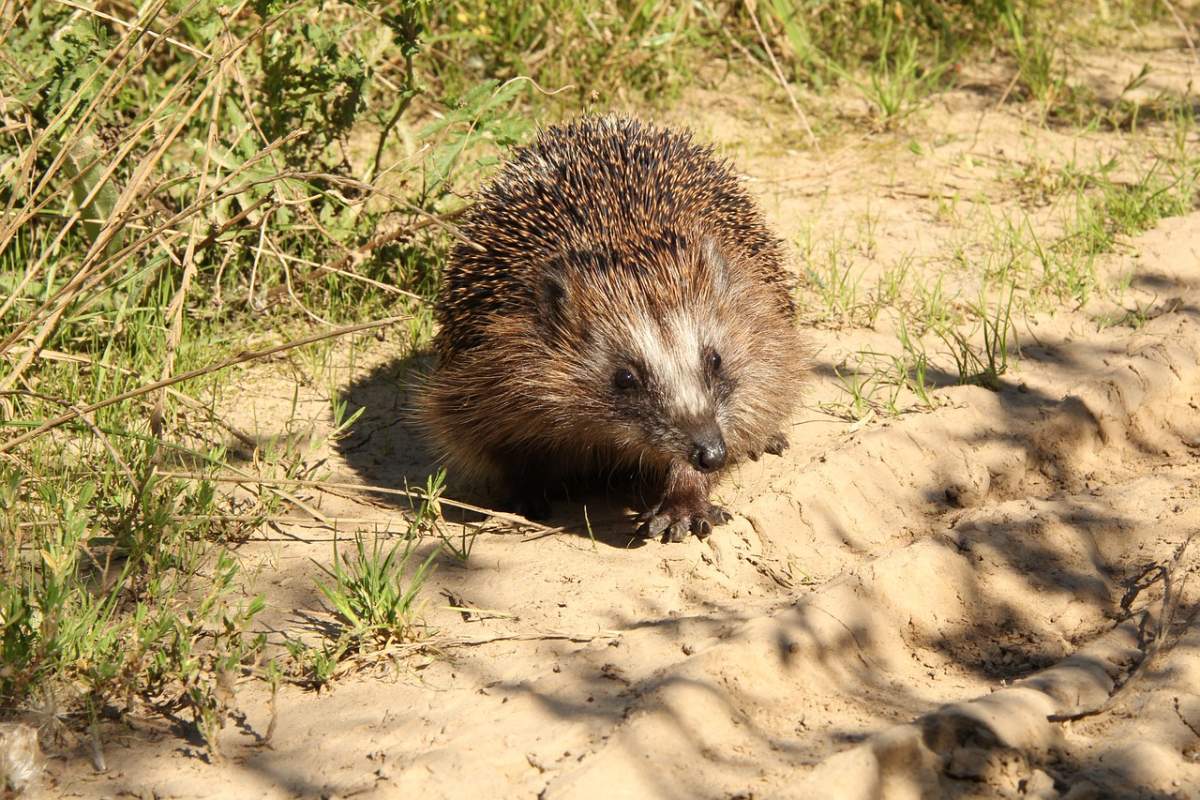
- Name: Desert hedgehog
- Scientific name: Paraechinus aethiopicus
- Conservation status:
The desert hedgehog is a species of mammal native to northwestern, northern, and northeastern Africa, the Middle East, and the Arabian Peninsula. It is one of the smallest hedgehogs in the world and is easily recognizable thanks to its black muzzle and its unusually large ears.
This hedgehog is particularly adaptable, and is under no threat whatsoever, except maybe for desert expansion and road traffic in some areas.
15. Cape hare
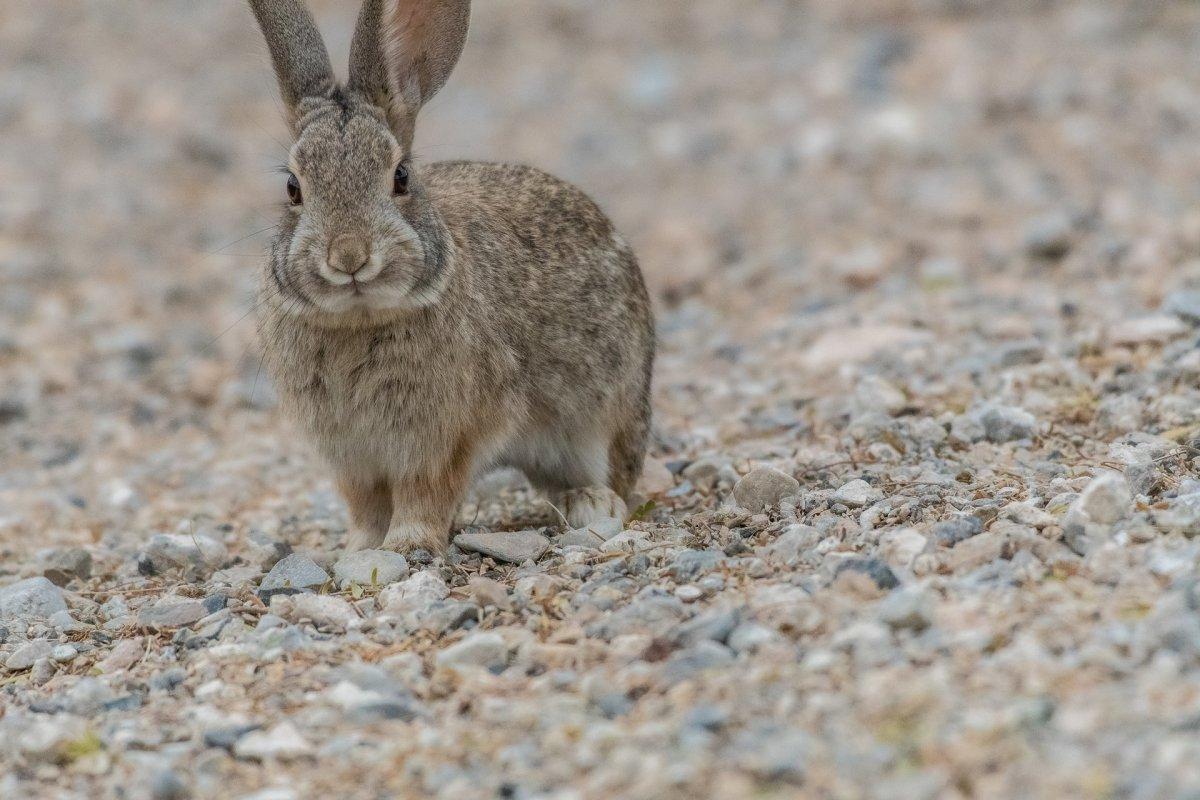
- Name: Cape hare
- Scientific name: Lepus capensis
- Conservation status:
The Cape hare, also known as the desert hare, is a species of hare native to Africa, Arabia, and the Indian subcontinent. Similar to other hares, it has very large eyes, which are ideal to look out for potential predators, and well-developed hind legs, perfect for leaping and running.
This hare can be found in the grasslands and semi-desert areas of Palestine, and it feeds on grass and shrubs during the night.
16. Indian crested porcupine
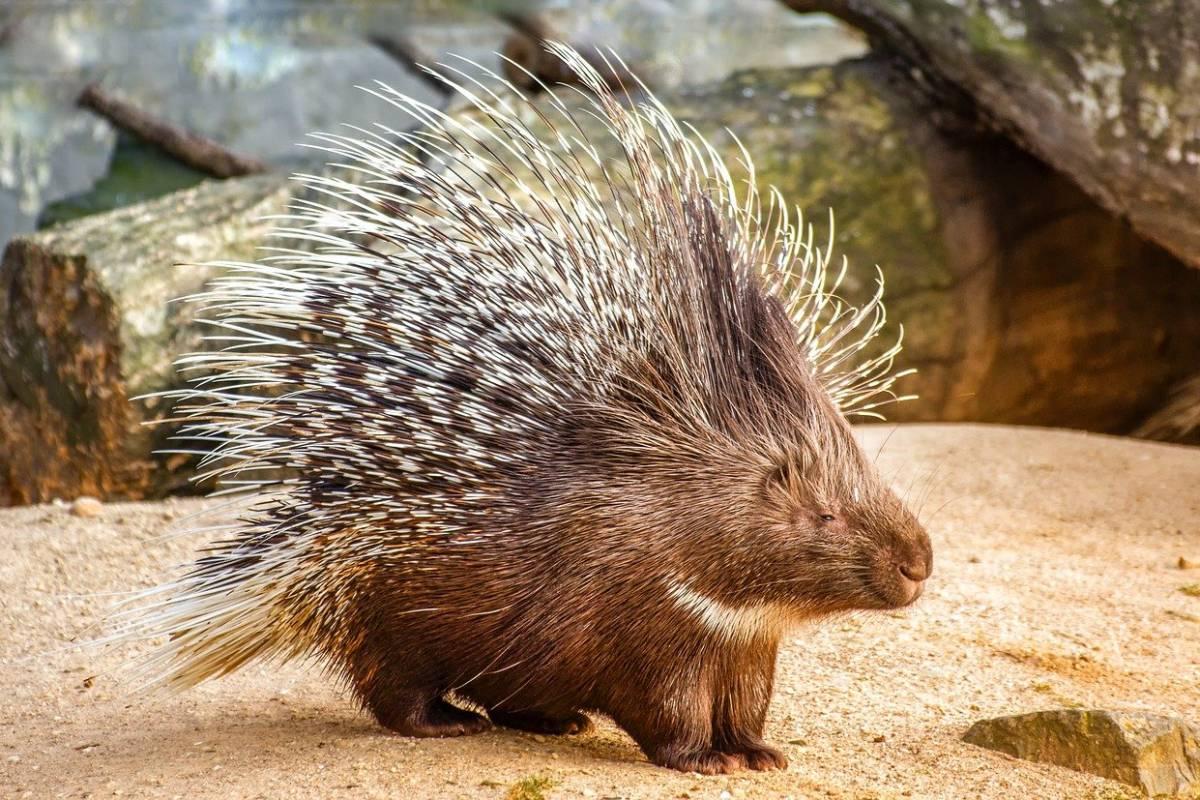
- Name: Indian crested porcupine
- Scientific name: Hystrix indica
- Conservation status:
The Indian crested porcupine is a species of Old World rodent native to the Middle East and southern Asia. Its diet is mostly herbivorous, but also very broad, as it can feed on bulbs, fruits, and grains, but also small vertebrates and insects.
In some parts of its range, the Indian crested porcupine is considered a pest, mainly due to its taste for agricultural crops. It is also known to chew on bones to reinforce its quills.
17. Rock hyrax
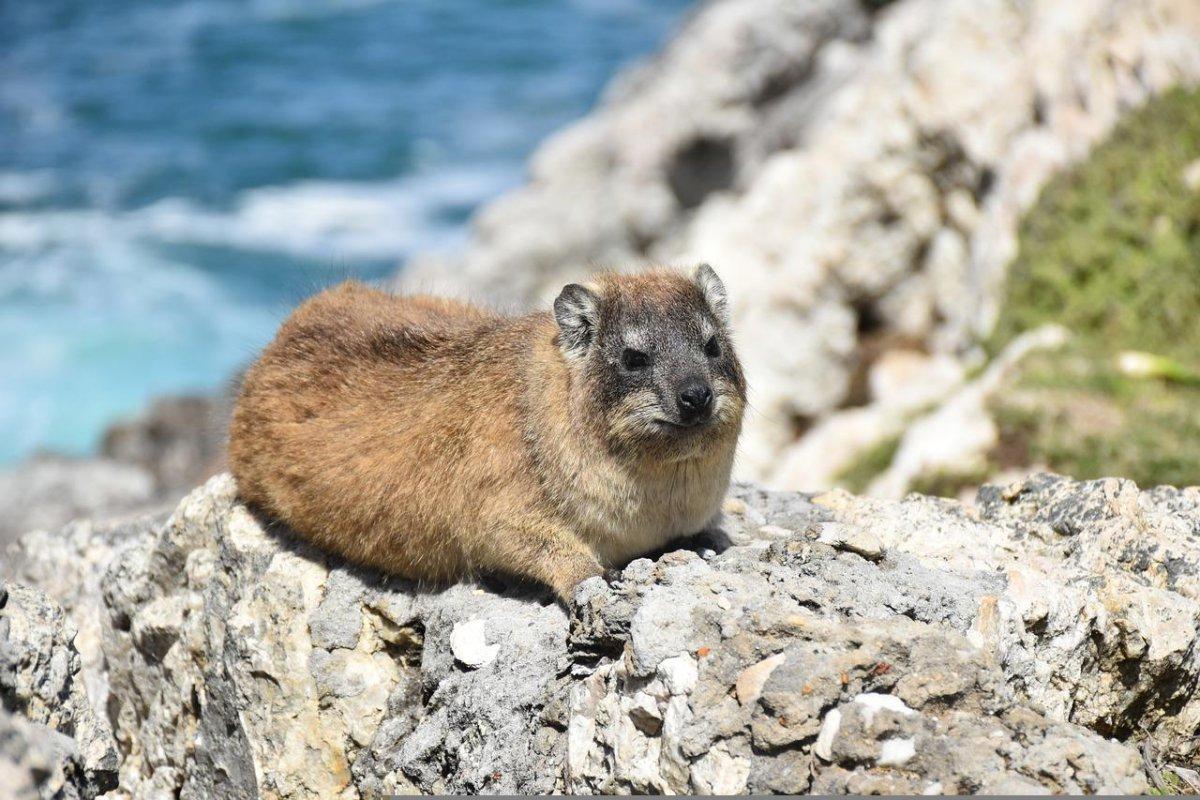
- Name: Rock hyrax
- Scientific name: Procavia capensis
- Conservation status:
The rock hyrax, also known as the rock rabbit, the dassie, or the Cape hyrax, is a medium-sized species of mammal native to the Middle East and Africa. It lives at elevations of up to 4,200 m / 13,800 ft above sea level and usually stays near rock crevices that it can use to escape from predators.
Believe it or not, this small animal is one of the closest relatives of the elephant!
18. Beech marten
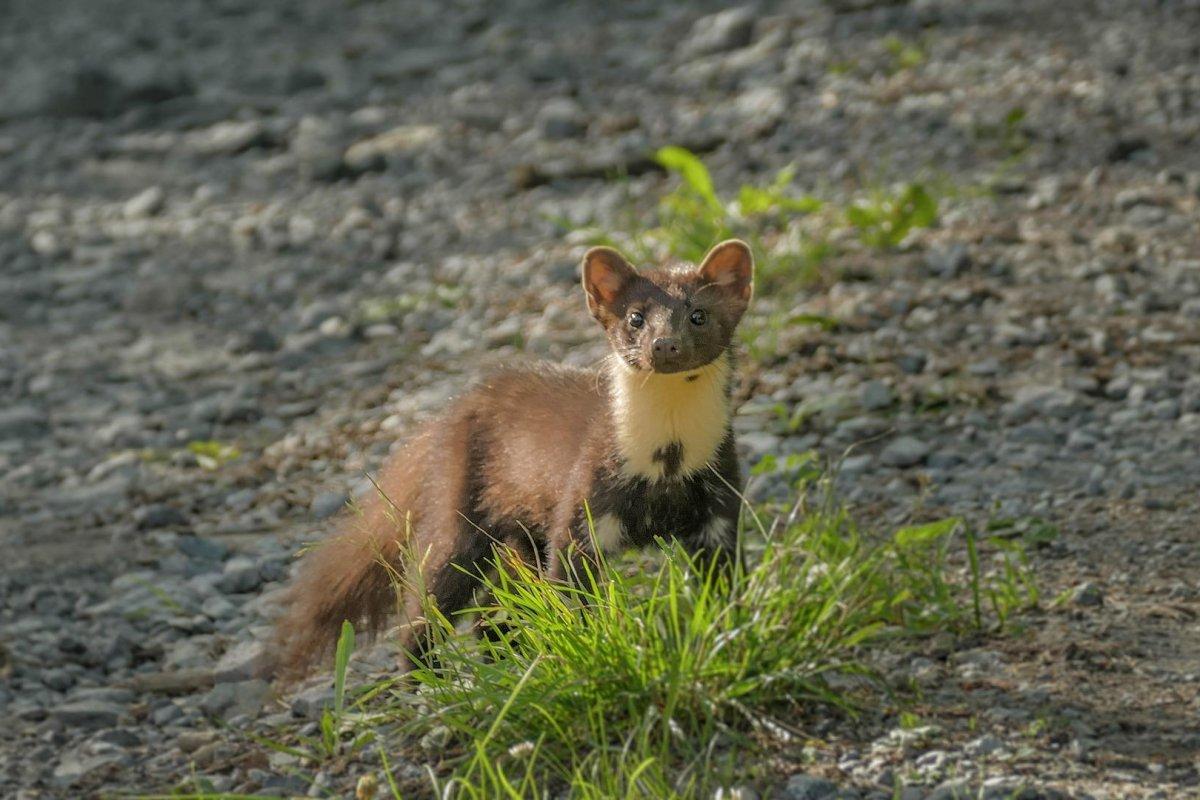
- Name: Beech marten
- Scientific name: Martes foina
- Conservation status:
The beech marten, also known as the house marten, the stone marten, or the white-breasted marten, is a species of marten native to Central Asia and Europe, and with feral populations in North America. Thanks to its large numbers, wide range, and presence in several protected areas, it is considered of least concern.
This marten can be found in a number of forests and open habitats of Palestine. There, it feeds on large quantities of plant food such as cherries, pears, raspberries, and grapes.
19. Jungle cat
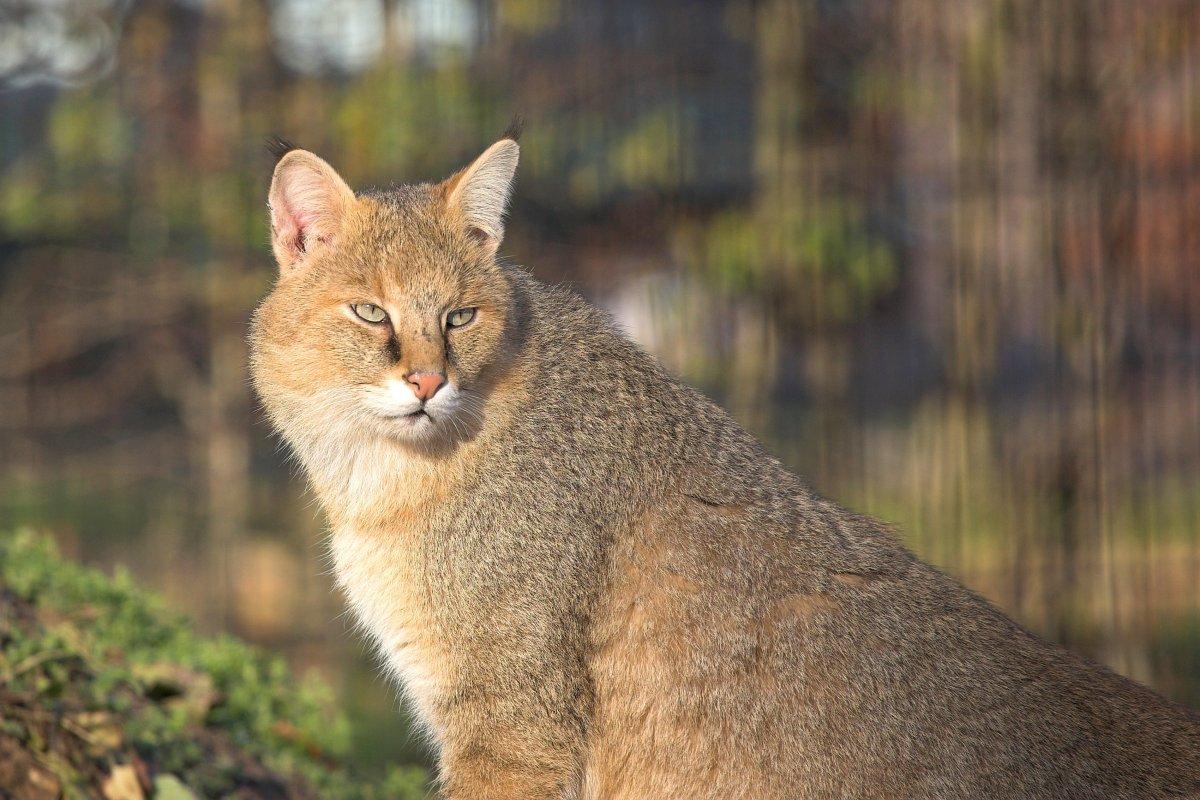
- Name: Jungle cat
- Scientific name: Felis chaus
- Conservation status:
The jungle cat, also known as the swamp cat or the reed cat, is a medium-sized species of cat native to the Middle East, southern China, southern and southeastern Asia, and the Caucasus. It lives in wetlands such as swamps, as well as riparian and littoral areas with dense vegetation.
Although listed as least concern, the jungle cat is threatened by trapping, poisoning, and habitat loss in the form of wetlands destruction.
—
So there you have them, these were my 19 wild animals in Palestine. I hope you enjoyed this list and that you learned something new today.
In case you want to learn more about animals in the country, feel free to keep reading, as I still have lots of things to tell you about:
Endangered Animals of Palestine
This is definitely the saddest part of the list, but it is very important to raise awareness. Because of this, let’s go through the list of endangered animals in Palestine.
Here are the animals in danger of extinction in Palestine.
- None
- Sociable lapwing
- Slender-billed curlew
- Tope
- Lusitanian cownose ray
- Sawback angelshark
- and 3 more…
- White-headed duck
- Angular roughshark
- Bramble shark
- Persian fallow deer
- Mountain gazelle
- and 10 more…
To see the full list of endangered species in Palestine, head over to the International Union for Conservation of Nature’s Red List.
What is the National Animal of Palestine?
The national animal of Palestine is the mountain gazelle.
Also known as the Palestine mountain gazelle, the mountain gazelle is the emblem of the country. Its range is pretty wide, going from Israel to Turkey, but its populations are unevenly distributed.
This gazelle has long been an important part of local culture and traditions and was featured in several stories and pieces of art back in the Byzantine era.
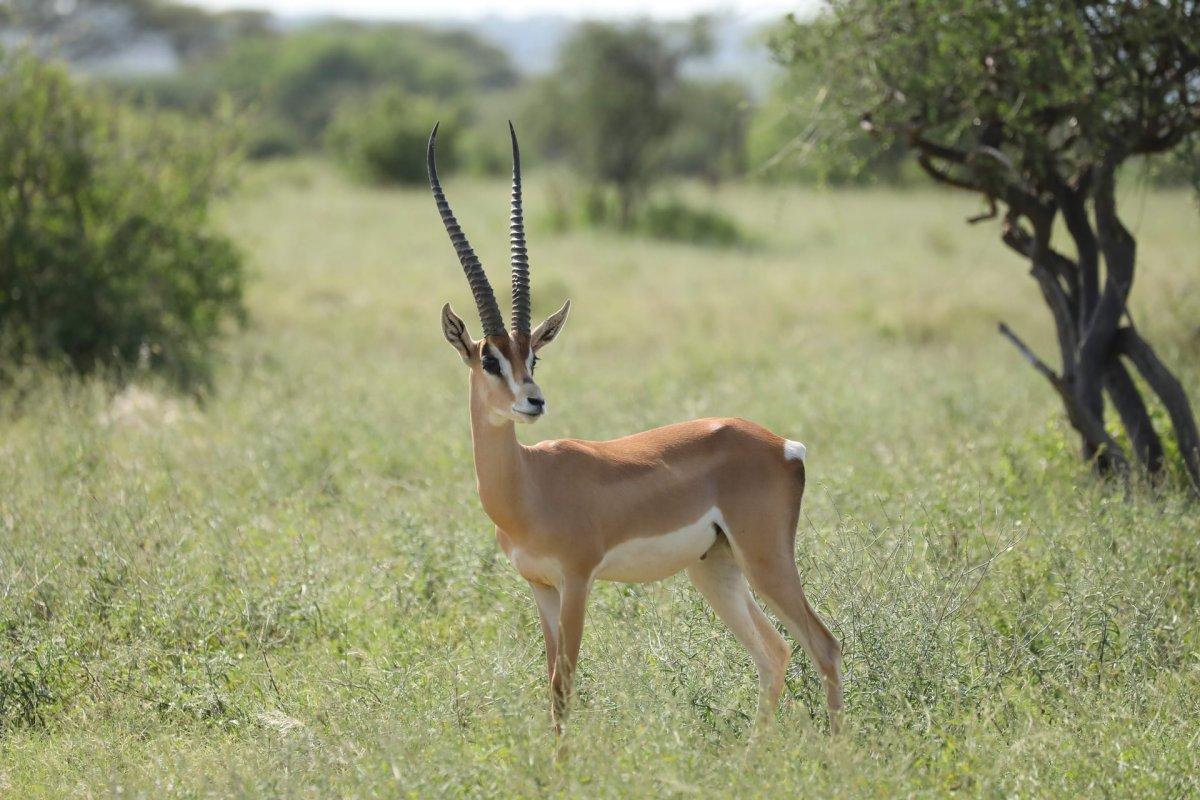
How Many Animals Native to Palestine?
What is the diversity of native animals in Palestine?
Let’s look at the total number of species of Chordata (mammals, birds, fishes, and reptiles).
Total number of animal species in Palestine: 409 (5,029 in total in West and Central Asia)
More About Animals in the World!
Loved these Palestine animal facts? Want to see what animals live in other countries?
Then check out these posts:
Or click here to see ALL the facts up on the blog! Spoiler alert: there’s A LOT of them.
Share the knowledge! Click on the buttons below to share information about these famous animals in Palestine with your friends, and help them learn more about the world 🙂
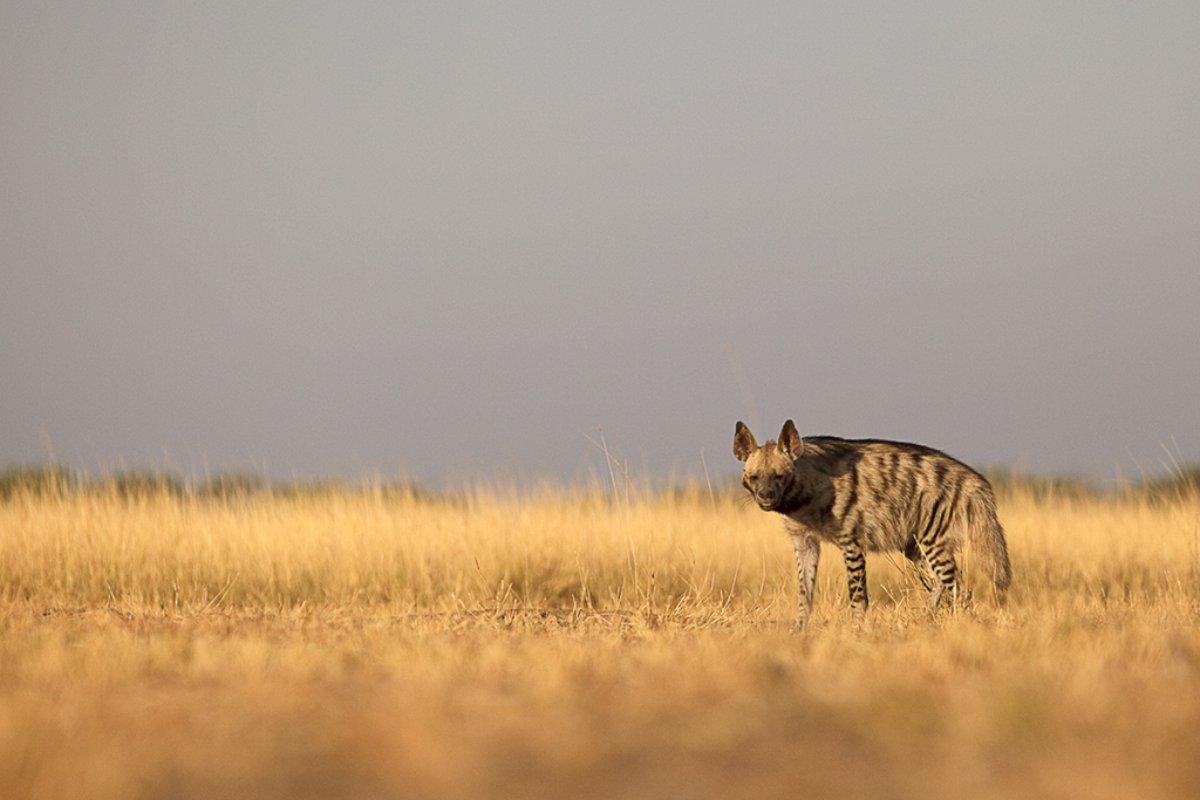

![10 Wild Animals in Chad [Wildlife in Chad]](https://www.kevmrc.com/wp-content/uploads/2022/12/10-wild-animals-in-chad-africa.jpg)
![18 Wild Animals in Congo [Wildlife in Congo]](https://www.kevmrc.com/wp-content/uploads/2022/12/18-wild-animals-in-congo.jpg)
![14 Wild Animals in Brunei [Wildlife in Brunei]](https://www.kevmrc.com/wp-content/uploads/2022/12/14-wild-animals-in-brunei.jpg)